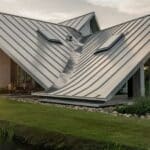Ottonian architecture Medieval German style blending Romanesque and Byzantine influences featuring intricate designs sturdy stone structures and prominent use of arcades for visual and spiritual impact.
Delve into the mesmerizing world of Ottonian architecture as we explore the intricate details of its defining feature the arcade. In this captivating journey, we unravel the significance design intricacies, and lasting influence of arcades within the splendid structures of medieval Germany.
From grand cathedrals to ornate palaces Ottonian arcades epitomize the fusion of craftsmanship and artistry offering a glimpse into a bygone era of architectural splendor. Join us as we uncover the secrets behind these graceful arches which not only provided structural support but also served as symbols of power faith and artistic expression.
What is Ottonian architecture?
Ottonian architecture emerged during the reign of the Ottonian dynasty in medieval Germany from the 10th to early 11th century. It blends Romanesque and Byzantine influences characterized by intricate designs elaborate archways and sturdy stone structures serving as symbols of power and piety.
Featuring grand cathedrals monasteries and palaces Ottonian architecture showcases meticulous craftsmanship and attention to detail. It represents a cultural and artistic revival emphasizing both functional and visually stunning elements in architectural design.
Alao read this: SHOULD YOU BUY A BOOKSHELF OR DIY YOUR OWN?
The Role of the Arcade in Ottonian Architecture
The arcade in Ottonian architecture played a crucial role in both function and aesthetics. It provided structural support to buildings allowing for taller and more spacious interiors while also enhancing the visual appeal of facades.
Aesthetically, the repetition of arches created a sense of rhythm and harmony within architectural spaces guiding the eye and adding depth. Additionally, arcades served as transitional areas connecting different parts of a building and providing sheltered walkways for movement.
Key Features and Characteristics of Arcade Design
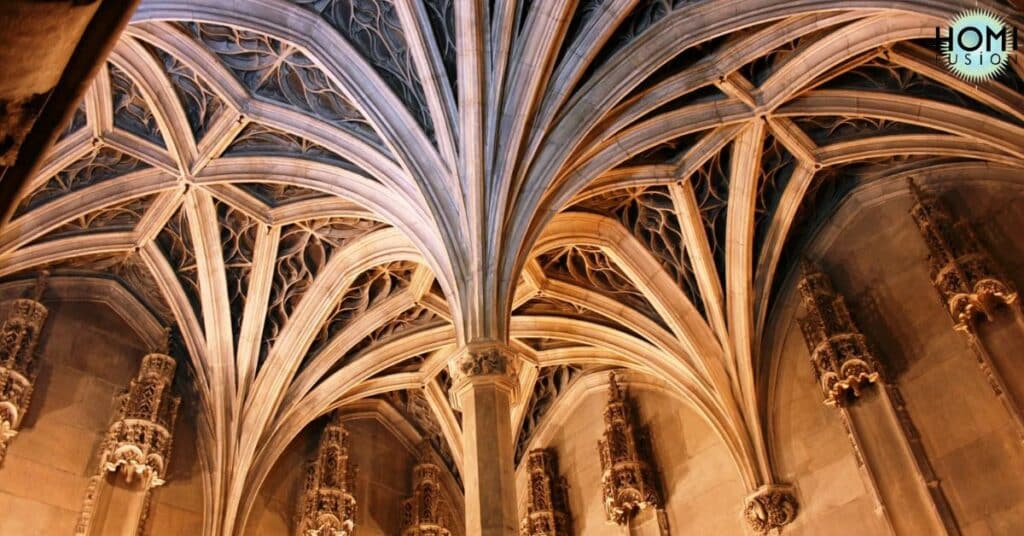
Arcade design in Ottonian architecture is defined by its repetition of arches supported by columns or piers. This repetition creates a sense of continuity and rhythm within the structure.
These arcades serve as transitional spaces connecting different areas of a building while also providing shade and shelter. Additionally, the intricate craftsmanship and attention to detail in each arch and column contribute to the overall beauty and complexity of Ottonian architectural design.
Examples of Notable Arcades in Ottonian Architecture
One notable example of an arcade in Ottonian architecture can be found in the Abbey Church of Saint Michael in Hildesheim Germany. Its series of rounded arches supported by columns create a sense of grandeur and harmony.
Another remarkable arcade exists in the west work at Corvey Abbey featuring intricately carved stone arcades that showcase the craftsmanship of the Ottonian era. These examples demonstrate the technical skill of Ottonian architects and highlight their dedication to creating visually stunning spaces.
Also read this: 9 RICHEST FLORIDA NEIGHBORHOODS IN 2024 – A FULL GUIDE
The different types of arcade in Ottonian architecture
In Ottonian architecture various arcade types include blind cloister and gallery arcades each serving distinct functions like decoration or structural support.
Blind Arcade
A blind arcade in Ottonian architecture refers to a decorative series of arches that do not open into any interior space. Instead they adorn the façades of buildings adding visual interest and texture to the exterior design. These ornamental features contribute to the overall grandeur and sophistication of Ottonian structures showcasing the craftsmanship and artistic prowess of the era. Blind arcades serve as striking elements that captivate the viewer’s gaze enhancing the aesthetic appeal of medieval buildings.
Cloister Arcade
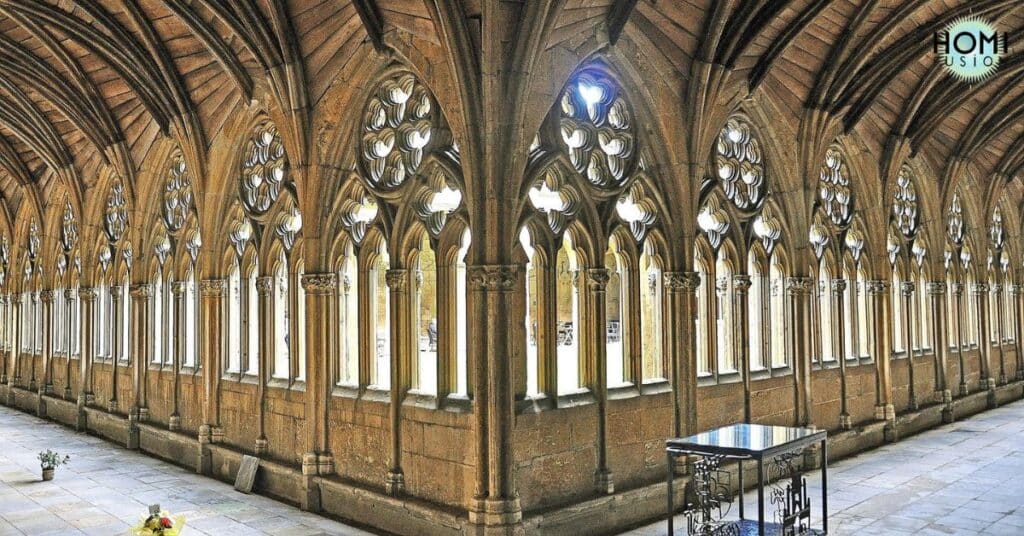
A cloister arcade in Ottonian architecture consists of a series of arches surrounding an open courtyard or garden space within monastic buildings. These covered walkways provide sheltered paths for monks or visitors to stroll fostering contemplation and reflection. Cloister arcades serve both practical and spiritual purposes offering peaceful areas for meditation while also enhancing the architectural beauty of the monastery. Their design reflects the harmony between functional utility and aesthetic elegance characteristic of Ottonian architectural style.
Gallery Arcade
A gallery arcade in Ottonian architecture is typically found on upper levels within buildings serving both practical and aesthetic functions. These arcades provide additional structural support while offering elevated views and opportunities for ornamentation such as sculptures or decorative motifs. They contribute to the architectural richness and spatial complexity of Ottonian structures showcasing the ingenuity and craftsmanship of the era.
Chapel Arcade
A chapel arcade in Ottonian architecture refers to arcades incorporated within larger ecclesiastical structures like cathedrals or monasteries specifically within chapels. These arcades often serve as transitional spaces between different areas of worship or as decorative elements within individual chapels adding to the spiritual ambiance of the sacred space. With their graceful arches and intricate details chapel arcades contribute to the architectural beauty and religious significance of Ottonian buildings.
Crypt Arcade
A crypt arcade in Ottonian architecture is situated within the lower levels of buildings particularly those with crypts. These arcades provide structural support while creating atmospheric spaces for burial chambers or additional areas for religious rites and ceremonies. Featuring sturdy columns and graceful arches crypt arcades add to the solemnity and spiritual ambiance of Ottonian architectural spaces.
Symbolism and Meaning Behind the Use of Arcades
Arcades in Ottonian architecture symbolize a connection between the earthly realm and the divine bridging mortal life with heavenly realms. The repetitive arches convey a sense of harmony and order reflecting beliefs in cosmic balance and spiritual alignment.
Furthermore, arcades were often used to delineate sacred spaces within churches and monasteries emphasizing their significance as areas for prayer and reflection. The play of light and shadow within arcades added depth and mystery enhancing the spiritual experience for worshippers and imbuing architectural spaces with a sense of reverence.
Exploring the intricacies of the arcade in ottonian architecture
Explore the intricate beauty of Ottonian architecture through its captivating arcades. These arcades characterized by graceful arches and meticulous craftsmanship offer a glimpse into medieval artistic prowess.
From providing structural support to serving as symbolic conduits between earth and heaven Ottonian arcades play a multifaceted role in architectural design. Delve into the details and uncover the fascinating intricacies of these architectural marvels.
Ottonian Arcades and Later Architectural Styles
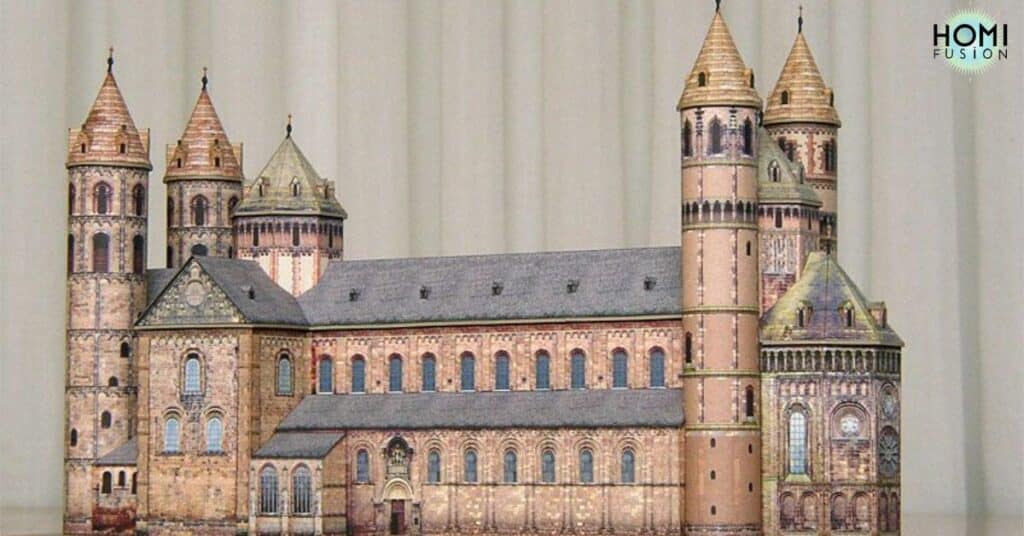
Ottonian arcades left a lasting legacy influencing architectural styles for centuries to come. Elements of Ottonian design such as the graceful arches and intricate detailing can be seen in later architectural movements.
From Romanesque to Gothic to Renaissance buildings the essence of Ottonian arcades persisted showcasing a timeless appeal. Today, architects continue to draw inspiration from Ottonian architecture incorporating its elements into contemporary designs thus bridging the gap between tradition and innovation.
The function of the arcade in Ottonian architecture
The arcade in Ottonian architecture served both practical and aesthetic purposes. Structurally, it provided support for buildings distributing weight evenly and allowing for taller more spacious interiors.
Aesthetically, the repetition of arches created a sense of rhythm and harmony within architectural spaces, while also guiding movement throughout the building. Additionally, arcades often acted as transitional areas connecting different parts of a building and providing sheltered walkways for movement and contemplation.
The significance of the arcade in Ottonian architecture
The arcade held significant symbolic and functional importance in Ottonian architecture. Symbolically, it represented a connection between earth and heaven enhancing the spiritual experience within religious buildings.
Functionally, arcades provided structural support created rhythm and harmony within spaces and served as transitional areas for movement. Their versatility and beauty contributed to the overall grandeur and magnificence of Ottonian architectural design.
The Role of Arcades in Ottonian Architecture
The role of arcades in Ottonian architecture was multifaceted. They provided structural support creating sturdy frameworks for buildings allowing for expansive interiors.
Additionally, arcades added aesthetic value contributing to the visual appeal of architectural designs. They served as transitional spaces guiding movement within buildings while also enhancing the overall harmony and rhythm of architectural compositions.
Design Features and Characteristics of Ottonian Arcades
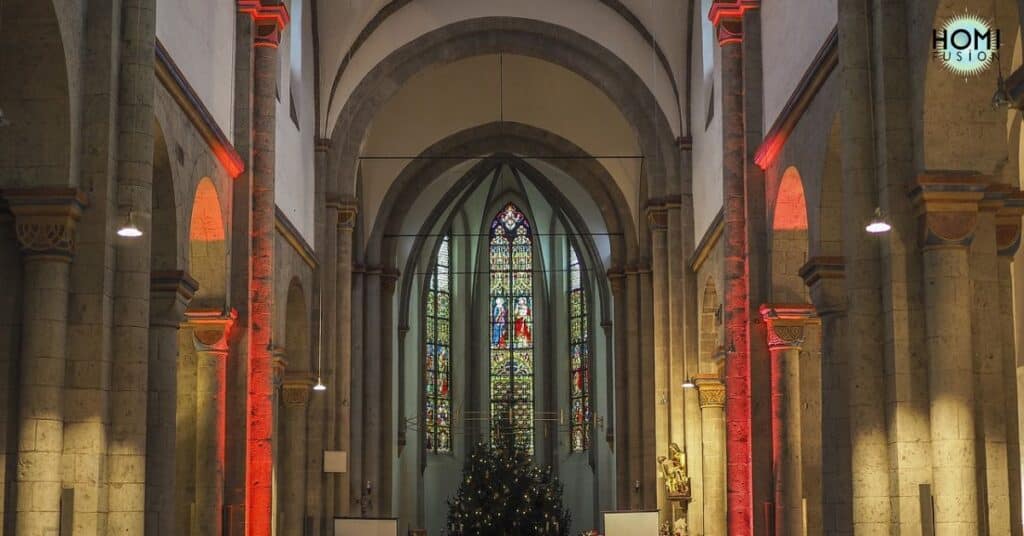
The design features of Ottonian arcades were distinctive and intricate. They typically consisted of a series of arches supported by columns or piers creating visually striking elements within buildings.
Characterized by repetition and rhythm these arcades added depth and complexity to architectural spaces. Their careful craftsmanship and attention to detail showcased the skill and artistry of Ottonian architects.
Symbolism and Cultural Significance of Ottonian Arcades
Ottonian arcades held profound symbolism and cultural significance. They represented a connection between the earthly and the divine serving as spiritual conduits within religious spaces.
The repetitive arches and intricate designs conveyed a sense of order and harmony reflecting the beliefs and values of the time. Additionally, arcades are often adorned with religious art and symbols further emphasizing their role as sacred spaces within Ottonian architecture.
Frequently asked questions
What was the arcade in Ottonian architecture?
The arcade in Ottonian architecture was a covered walkway with arches supported by columns or piers often found in churches for both functional and decorative purposes.
What are the features of the Ottonian architecture?
The features of Ottonian architecture include round arches flat ceilings and the use of massive rectangular piers between columns in regular patterns.
What is the architecture of the Ottonian church?
The architecture of an Ottonian church typically features a nave with two aisles and two towers reminiscent of Carolingian architecture. Examples include St. Cyriakus Church in Gernrode Germany dating back to 960-965.
What distinguishes Ottonian architecture from other medieval styles?
Ottonian architecture is distinguished by round arches flat ceilings and massive rectangular piers setting it apart from other medieval styles.
What role did arcades play in Ottonian architectural design?
Arcades in Ottonian architecture provided structural support and added visual interest to buildings often used in churches for sheltered walkways and decorative elements.
Final words
In exploring the intricacies of the arcade in Ottonian architecture we uncover a world where craftsmanship and symbolism intertwine. These graceful arches supported by columns or piers not only provided structural integrity but also added depth and beauty to the architectural compositions of the time. Through their repetitive patterns and meticulous detailing Ottonian arcades served as both functional passageways and symbolic conduits, bridging the earthly realm with the divine.
As we marvel at the grandeur of structures like St. Cyriakus Church and St. Michael’s Church we are reminded of the skill and artistry of medieval artisans. The legacy of Ottonian arcades endures inspiring contemporary architects and enthusiasts to appreciate the timeless elegance and spiritual significance embedded within these architectural masterpieces. Exploring Ottonian arcades unveils a rich tapestry of history craftsmanship and beauty that continues to captivate and inspire generations to come.


